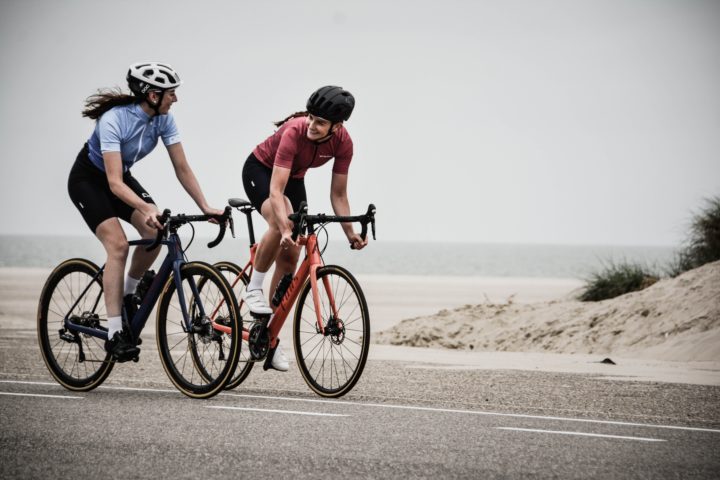Both kids and beginners just starting to bike will find our guide to cycling helpful. Or if you are returning after a long break from cycling, you can refresh before your next biking journey. Cycling is a great aerobic sport that burns calories and offers lots of health benefits. It is an enjoyable way to exercise, lose weight, lower your cholesterol, strengthen your legs, and live a healthy and active lifestyle. You can cycle casually, competitively, or as a way of getting around your local area. Cycling can be a great way to be greener and reduce personal vehicle emissions that harm our environment.
Keep reading because Pre-Workout World has industry statistics on how supplements can benefit you. Additionally, our writers have the details you need to know about pre-workout supplements, exercises, workouts, and also product reviews.
Getting Prepared
Before you start cycling, there are some important things that you need to know and a few pieces of safety equipment you need every time you ride. Wearing a properly fitted bike helmet is a must. Helmets protect your head in the event of an accident and reduce the severity of head and brain injuries.
Equipping your bike with a white front headlight or a red reflector makes it easier for motorists and other cyclists to see you in the dark or bad weather. Always carry an identification card, such as a driver’s license or a non-driver state ID card. Cyclists should also carry a water bottle or sports drink on their bike.
Cycling for Kids
Bike riding takes practice and patience, but once you get the hang of it, you never forget and there are so many good things that come along with bike riding: confidence, the feeling of freedom and achievement, and a new and fun way to be active with friends and as a family.
When learning how to ride a bike, it’s important to choose the right bike. A good bike is one that is the right size for your body. Your feet should touch the ground on both sides when stopped and standing straight. The handlebars should be at a comfortable height that allows the rider to see well over them. A good bike should also be easy for you to turn and maneuver.
Balance is key when it comes to biking. It may feel like a difficult task at first, but don’t give up! It will get easier with time and practice. To balance on a bike, you want to start off by sitting on the bike and pushing with your legs. As you get used to the feeling of the bike and can control it better, you can continue to glide as you sit on the bike. Once you feel comfortable, you can start using the pedals and going at a slow pace. For young children, balance bikes that are designed without petals may prove to be a useful teaching tool.
Cycling for Adults and Beginners
You are never too old to start cycling. It may seem daunting at first, but with the right approach and practice, anyone can learn how to ride a bike. When you are first starting out, finding the right type of bike might seem like a challenge. With so many choices, which one do you choose? There are mountain bikes, road bikes, hybrid bikes, and city bikes, and each is meant for different riding conditions.
Road bicycles
If you like riding fast, road bicycles are great. But you should only ride them on smooth pavement. They are aerodynamic and designed for long-distance riding. Racing road bikes are slightly different and are typically have carbon frames. Whereas, recreational road bikes are more likely to be made using aluminum. Both recreational road bikes and racing road bikes have high-pressure tires and little front suspension. This makes them more suitable for smooth, paved roads than rugged outdoor trails.
Mountain bikes
Mountain bikes are designed for off-pavement riding and are more suitable for single-track trails or forest service roads. Then you have the option of a hybrid bike, which is a mixture of a mountain bike and a road bike. This makes them perfect and more suitable all around. They are also the most preferred city bikes. If you are a little more old-fashioned, you may like the cruiser bike. Cruiser bikes are great for leisurely rides, short-distance commutes, and errands.
Cycling rules of the road
Once you’ve decided on your ride, it’s important to familiarize yourself with the rules of the road. Like cars, bikes must be ridden on the right side of the road, with traffic, not against it. Whenever possible, use designated bike lanes and always obey traffic laws. Always use arm signals to indicate to motorists and other cyclists when you’re turning. During bad weather or in dark conditions, don’t forget to turn your lights on the front and rear sides of your bike.
Additional Resources
- Beginner’s Cycling Tips: 25 Essential Pieces of Advice for New Cyclists
- A Healthy Hobby: Beginners Guide to Cycling
- Cycling Tips: Essential Riding Advice for Beginners
- The Benefits of Bicycle Riding for Kids
- 6 Bicycle Types to Cruise, Explore, Commute, Shred Mountains
- What Types of Bikes are Commonly Used
- Health Benefits of Cycling and Do’s and Don’ts
- The Benefits of Cycling
- Here Are 8 Proven Health Benefits of Cycling
- The Health Benefits of Cycling
- Benefits of Cycling
- The Benefits of Cycling for Children and Families
- How to Get the Most Out of Your Workout
- 9 Amazing Health Benefits of Cycling for Children & Kids
Related Posts:
- Glycemic Index Chart For Sweeteners In Supplements
- Sports Injuries: Causes, Types, Treatment & Prevention
- How To Count Macros: A Step By Step Guide For Weight Loss, Muscle Gain, And Overall Healthy Eating
- Exercise As Medicine: How Physical Activity Can Help Depression And Anxiety
- The Complete Guide To Protein Intake
